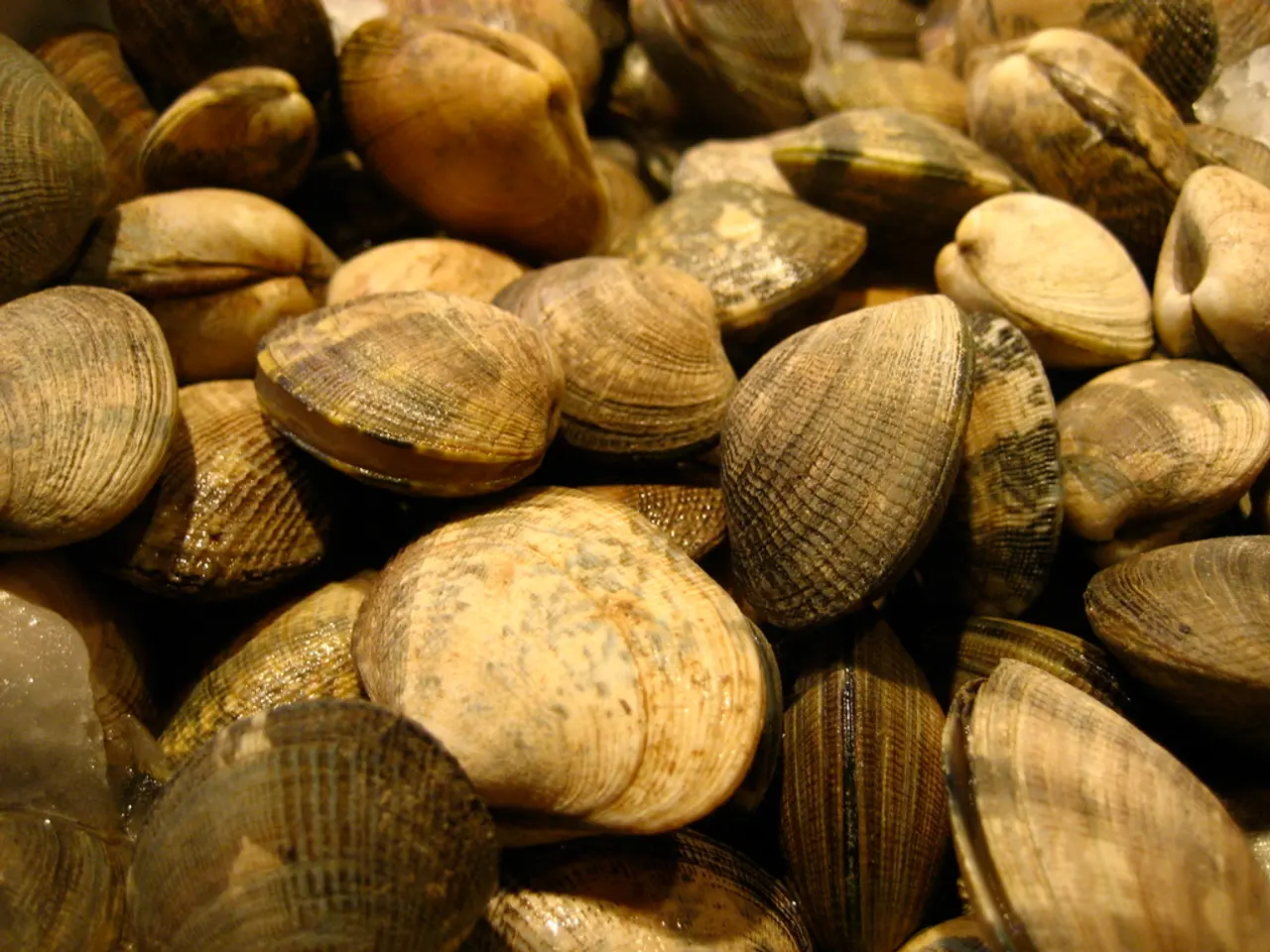Solar Energy Advancements: Colossal Clams and Their Role in Future Power Generation
Giant Clams and the Future of Solar Energy
The world of renewable energy is abuzz with excitement as scientists delve into the unique light management techniques of the giant clam, a creature known for its impressive size and symbiotic relationship with photosynthetic algae.
This marine marvel, capable of growing up to four feet long and weighing over 500 pounds, has been the focus of research since 2014, when scientists began mapping its biological structures. The journey of discovery into the clam's light management techniques is just beginning, and the findings so far are nothing short of remarkable.
Giant clams house symbiotic algae called zooxanthellae within their tissues. These algae perform photosynthesis, converting sunlight into energy shared with the clam. To optimize light for the algae, giant clams have developed specialized tissue structures with iridescent layers (nacre) that enhance and direct light deep into their bodies, effectively managing and amplifying light absorption beyond what simple exposure allows.
The nacre's multilayered, prism-like arrangement acts like thousands of microscopic prisms that refract and scatter light efficiently, creating a dazzling iridescence that serves to maximize the light available for photosynthesis inside the clam. This biological system combines light manipulation with symbiotic energy conversion, enabling the clam to thrive in sunlight-variable marine environments with remarkable efficiency.
These natural mechanisms inspire solar technology innovations by suggesting ways to integrate biomimetic photonic structures that mimic nacre’s layered architecture to improve light capture and internal reflection in solar panels. By enhancing solar cell efficiency through distributing light within photovoltaic materials more effectively, researchers aim to increase the amount of sunlight used for electricity generation.
Moreover, the development of durable, lightweight materials with layered microstructures inspired by the clam’s shell composition could improve both optical and mechanical properties. The clam’s strategy of combining structural light management with biological energy conversion points to future renewable energy technologies capable of more efficient, widespread solar energy capture, even under less-than-ideal light conditions.
While direct technological applications are under active research, the clam’s natural system serves as a powerful model for developing advanced biomimetic solar panels and materials in renewable energy. The unique ability of giant clams to harvest and use sunlight has sparked interest in the scientific community, with solar energy facing challenges such as efficiency and cost. Innovations inspired by giant clams could address these issues, potentially leading to solar devices that are both more efficient and adaptable for diverse environments.
Giant clams are not just fascinating creatures; they are also crucial to their ecosystems, found in coral reefs. They provide habitat and nutrients for various marine life, including rays and otters. Protecting these giants is essential for the entire reef ecosystem.
More efficient solar energy could have a significant positive impact on the environment by reducing emissions and pollution. By lowering our reliance on fossil fuels, we could decrease greenhouse gas emissions, contributing to the fight against climate change. In this sense, giant clams might be the unexpected heroes in our battle against global warming.
The practice of biomimicry, drawing inspiration from nature, is at the heart of this research. As we continue to unlock the potential of giant clams for solar technology, we are reminded of the incredible diversity and complexity of the natural world and the endless opportunities it offers for innovation and problem-solving.
- The research into giant clams' light management techniques could lead to conservation efforts in environmental-science, as efficient solar energy technologies inspired by the clam's unique structures could help combat climate change by reducing emissions and pollution.
- Understanding the clam's ability to promote symbiotic relationships with algae through nacre's iridescent layers, which enhances and directs light for increased energy absorption, could spur breakthroughs in science, specifically in the field of health-and-wellness, as similar principles could be applied to nutrient delivery systems.
- As scientists continue research on harnessing the efficiencies of giant clams for solar technology, they are reminded of the importance of conservation, as these creatures play a crucial role in maintaining the balance of marine ecosystems.
- The evolution of solar panels that mirror the iridescent layers and structured tissue of the giant clam could lead to a future where energy generation is not only more efficient but also more adaptable, providing energy to a wider range of environments and contributing to the long-term health and wellness of ecosystems.




